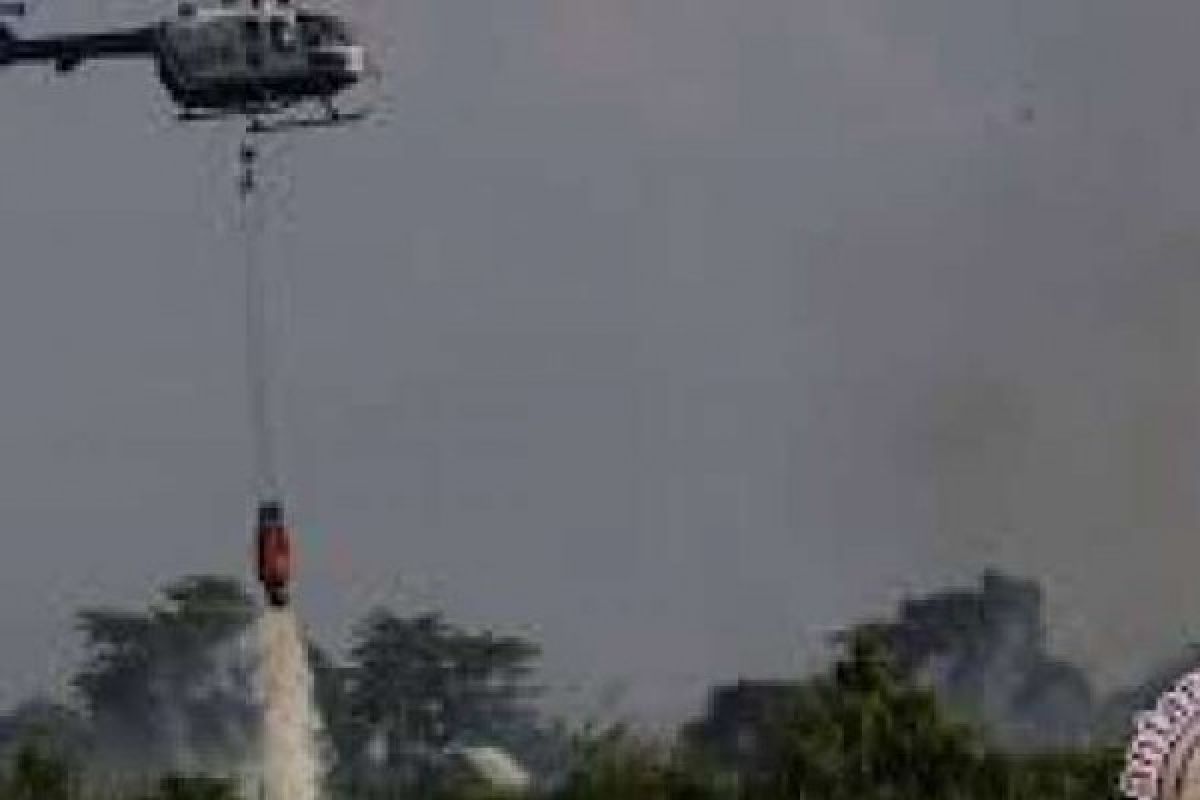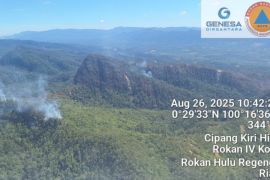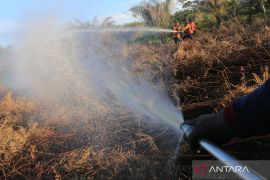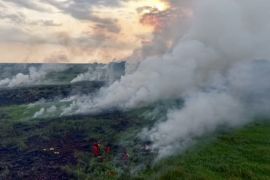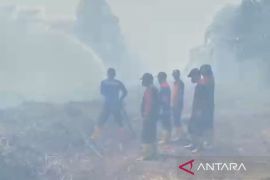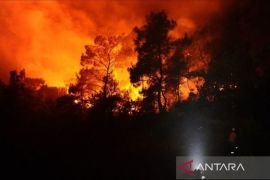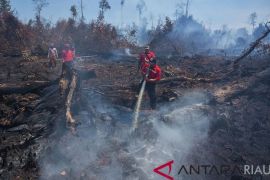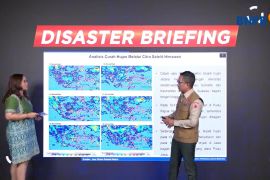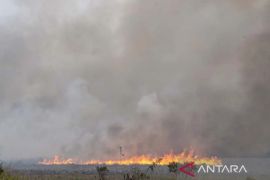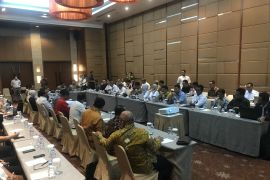I met with Singapore Minister of Environment and Water Sources Masagos Zulkifli. He thanked the Indonesian government for its efforts to handle land and forest fires and sent best regards to Mrs. Minister Siti NurbayaBatam, Riau Islands (ANTARA) - The Indonesian government's efforts to combat land and forest fires have received appreciation at the meeting of the Association of Southeast Asian Nations (ASEAN) member states in Brunei Darussalam to discuss transboundary haze pollution. "We concluded the meeting only last night. During the two-day session no participant (complained about) transboundary (haze pollution) from Indonesia. We explained our concrete efforts in the field but we must admit that it is very difficult to put out peatland fires," Director of Land and Forest Fire Control of the Environment and Forestry Ministry Raffles B Panjaitan said in a written statement released Wednesday.
"I met with Singapore Minister of Environment and Water Sources Masagos Zulkifli. He thanked the Indonesian government for its efforts to handle land and forest fires and sent best regards to Minister Siti Nurbaya," he said.
The integrated land and forest fire control task force comprising personnel from the military, police, national and regional disaster mitigation agencies, village heads, firefighters, fire brigades of national parks, natural resource and ecosystem conservation agency have continued their efforts to control fires arising from vulnerable areas, Raffles said.
As of August 6, 2019, 38 helicopters and planes have been involved in patrolling and extinguishing land and forest fires in the country.
Of the total, 19 have been deployed in Riau Province, four in South Sumatra Province, six in West Kalimantan Province, five in Central Kalimantan Province, two in South Kalimantan Province and one in Jambi Province.
Until August 5, 2019, helicopters and planes have conducted a total of 24,660 water bombing operations with 90,457,400 liters of water to put out fires in the areas that the team could not reach by land.
In addition, weather modification through cloud seeding has also been conducted, focusing on vulnerable areas. By August 5, 2019, 170 sorties of cloud seeding with 125,616 kilograms of salt have been conducted in the districts of Bengkalis, Siak, Indragiri Hilir, Kampar, Pelalawan, Ogan Ilir, and Meranti Islands and the municipality of Dumai in Riau Province.
The Meteorology, Climatology, and Geophysics Agency (BMKG) identified at least 18,895 hotspots in Southeast Asia and Papua New Guinea in the past two weeks and warned people of the possibility of forest and land fires.
"The increasing number of hotspots was due to the current atmospheric conditions and relatively hot and dry weather that tends to scorch plants more easily," BMKG's Deputy of Meteorology Mulyono R. Prabowo stated here Wednesday.
Information on the number of hotspots was obtained from the Terra Aqua Satellite (LAPAN) and Himawari Satellite (Japan JMA) imagery that was then analyzed by BMKG.
Based on the monitoring conducted by BMKG, the number of hotspots in some Southeast Asian regions has increased, from 1,395 as monitored on July 25, 2019, to 2,441 hotspots on July 28, 2019.
Furthermore, the hotspots began to reduce to 1,782 on July 29, 2019, and then to 703 hotspots on August 1, 2019.
The number of hotspots increased again to 3,191 on August 4, 2019, and was concentrated in the Indonesian provinces of Riau, Central Kalimantan, and West Kalimantan. The hotspots were also detected in some other ASEAN countries of Malaysia (in Sarawak), Thailand, Cambodia, Vietnam, Myanmar, and the Philippines.
Translator: Virna P Setyorini/Suharto
Editor: Rahmad Nasution
Copyright © ANTARA 2019
